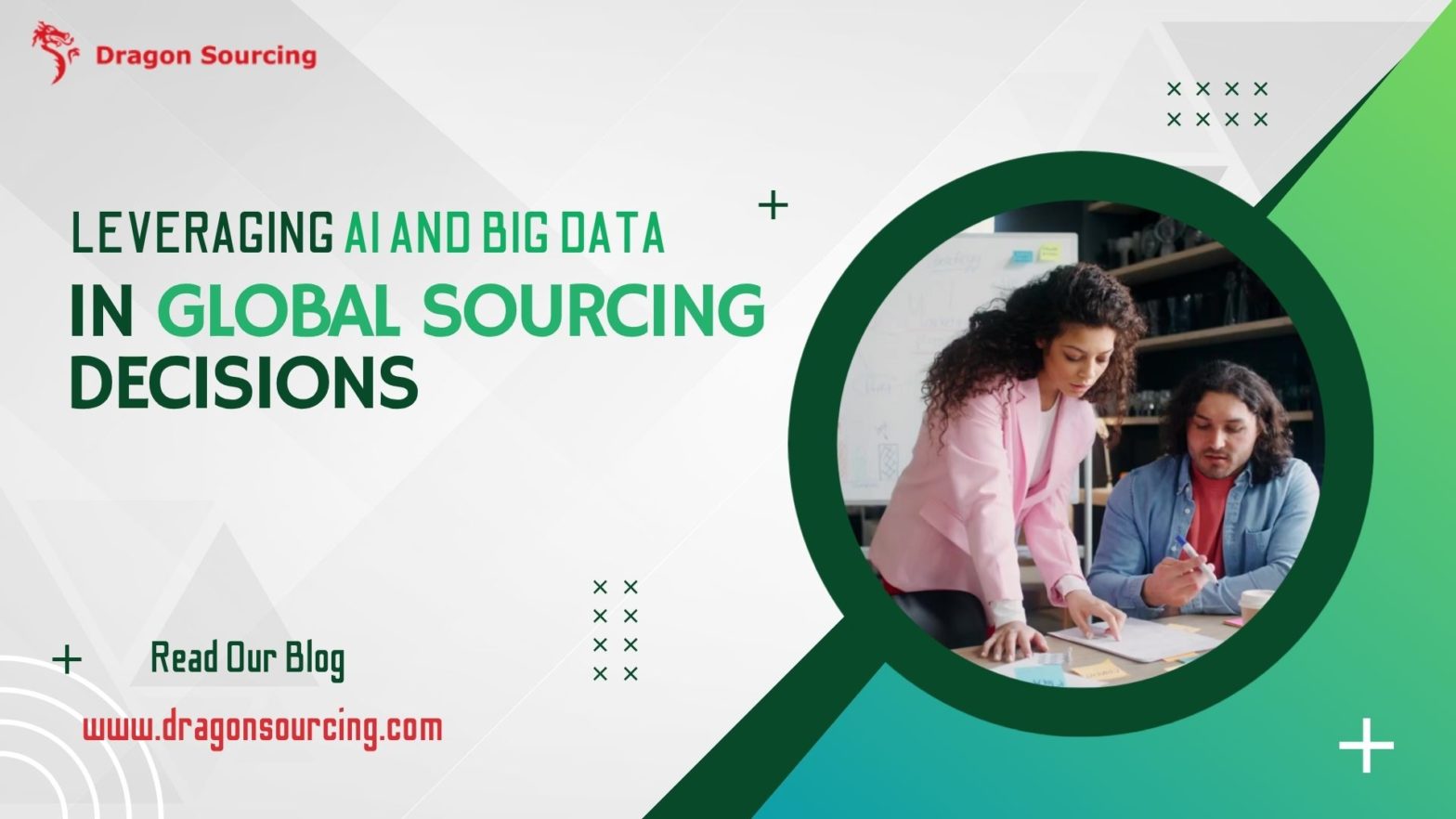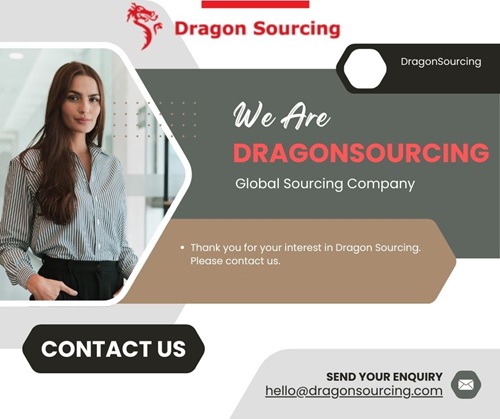
Summary: Leveraging AI and Big Data in Global Sourcing Decisions
AI and Big Data are transforming global sourcing by enabling smarter, faster, and risk-aware decisions.
Predictive analytics helps assess supplier and geopolitical risks in real time.
AI-driven platforms automate supplier discovery and performance evaluation.
Big Data improves cost forecasting by analyzing Total Cost of Ownership (TCO).
Real-time market intelligence enhances negotiation and sourcing agility.
AI supports smart contracting, ESG compliance, and regulatory monitoring.
Scenario planning tools help businesses prepare for global supply disruptions.
Adoption challenges include data quality, integration, and workforce readiness.
Future-ready sourcing is data-driven and ethically optimized.
In today’s volatile global marketplace, companies are under increasing pressure to streamline procurement, reduce costs, manage risks, and identify reliable suppliers across borders. Traditional methods of global sourcing are no longer sufficient to keep up with rapidly evolving demands, fluctuating markets, and complex geopolitical dynamics.
Enter Artificial Intelligence (AI) and Big Data—the twin technologies transforming the landscape of global sourcing services. By harnessing the power of AI and Big Data analytics, businesses are making faster, smarter, and more strategic sourcing decisions that were previously unimaginable.
In this blog, we explore how AI and Big Data are revolutionizing global sourcing and why businesses should invest in these technologies to stay competitive in 2025 and beyond.
The Challenges of Traditional Global Sourcing
Global sourcing has always involved complexities such as:
Inconsistent supplier quality
Geopolitical risks
Currency fluctuations
Supply chain disruptions
Regulatory compliance
Conventional approaches often rely on static data, spreadsheets, or manual assessments, which leave businesses exposed to inefficiencies and blind spots.
How AI and Big Data are Changing the Game
AI and Big Data offer procurement professionals a dynamic, data-rich environment where sourcing decisions are guided by predictive insights, automation, and real-time analysis.
Key Benefits at a Glance
| Feature | Traditional Sourcing | AI & Big Data-Driven Sourcing |
|---|---|---|
| Data Analysis | Manual, historical | Real-time, predictive |
| Supplier Evaluation | Limited, subjective | Comprehensive, AI-scored |
| Risk Management | Reactive | Proactive, predictive |
| Cost Forecasting | Based on past prices | Dynamic pricing models |
| Decision Speed | Weeks | Minutes or hours |
1. Predictive Analytics for Supplier Risk Assessment
One of the most powerful applications of AI in global sourcing is predictive risk assessment.
By analyzing millions of data points from:
News sources
Economic indicators
Social media sentiment
Weather and climate models
Past supplier behavior
AI can assess the potential risks associated with sourcing from a particular region or supplier. For example, if political unrest is brewing in a manufacturing hub, AI can alert companies ahead of time, enabling them to pivot to alternate suppliers.
Example:
A global electronics brand used predictive analytics to shift from a Vietnamese supplier before a labor strike impacted production—saving an estimated $4.5 million in losses.
2. Supplier Discovery and Evaluation
AI-powered platforms can scan supplier databases and match company needs with qualified vendors based on:
Certification and compliance data
Delivery track record
Pricing benchmarks
Sustainability practices
Instead of relying on human networking or time-consuming RFPs, businesses can discover and evaluate suppliers worldwide in seconds.
Real-World Tool:
TealBook, an AI supplier intelligence platform, uses machine learning to provide up-to-date supplier data and suggestions for global sourcing managers.
3. Optimizing Total Cost of Ownership (TCO)
Global sourcing decisions often focus too narrowly on the lowest unit price. However, AI models help companies evaluate the Total Cost of Ownership (TCO) by analyzing:
Shipping costs
Tariffs and duties
Customs delays
Return rates
Environmental impact
With Big Data, procurement leaders can compare multiple sourcing scenarios and select suppliers that optimize long-term value—not just short-term savings.
4. Real-Time Market Intelligence
AI algorithms scrape pricing data, raw material indexes, competitor activity, and logistics costs from thousands of sources. This market intelligence enables:
Better negotiation strategies
Real-time adjustments to contracts
Spot-buying opportunities
Case Example:
A fashion retailer used AI-driven price trend analysis to renegotiate a bulk fabric deal and saved 8% in procurement costs amid cotton price volatility.
5. Smart Contracting and Compliance
AI can automatically analyze legal documents and supplier contracts to identify non-compliance or hidden risks. This is especially useful in global sourcing, where contracts span multiple jurisdictions with varying laws.
Natural Language Processing (NLP) helps flag:
Unfavorable payment terms
Outdated certifications
Non-aligned regulatory clauses
This ensures suppliers remain compliant with global standards, such as REACH, RoHS, or ESG commitments.
6. Sustainability and ESG Monitoring
With ESG (Environmental, Social, and Governance) compliance gaining momentum globally, AI and Big Data can track sustainability performance across the supply chain.
Companies can score suppliers on:
Carbon footprint
Ethical labor practices
Waste management
Environmental impact of transportation
This creates a more transparent and responsible sourcing ecosystem—aligning with both consumer expectations and regulatory frameworks.
7. Dynamic Scenario Planning and Forecasting
AI helps simulate multiple sourcing scenarios based on potential disruptions:
“What if” a raw material becomes scarce?
“What if” shipping lanes are blocked due to geopolitical conflict?
“What if” the USD weakens against the supplier’s currency?
Dynamic forecasting tools allow businesses to prepare contingency plans, reducing exposure to uncertainties and ensuring continuity.
Challenges and Considerations
Despite the promise of AI and Big Data, adoption in global sourcing is not without hurdles:
Data quality: Poor or unstructured data leads to inaccurate insights.
Integration: AI tools must work across ERP, CRM, and procurement platforms.
Talent: Teams need training to interpret and act on AI insights.
Ethics: AI must be transparent and free from bias, especially when assessing ESG or compliance risks.
The Future Outlook
As global supply chains continue to grow in complexity, the adoption of AI and Big Data will become a competitive necessity rather than an advantage. Companies that invest now will be better equipped to navigate future disruptions, engage ethical suppliers, reduce costs, and enhance procurement agility.
From autonomous supplier discovery to real-time risk monitoring, AI is not replacing procurement professionals—it’s empowering them to make smarter, faster, and more strategic sourcing decisions.
Final Thoughts
Global sourcing is no longer just about finding the cheapest vendor—it’s about building resilient, transparent, and optimized supply chains. With AI and Big Data at the core, procurement leaders can future-proof their sourcing strategies while meeting the demands of a dynamic global economy.
Resources and References
McKinsey & Company – “How AI is reshaping global supply chains”
https://www.mckinsey.comWorld Economic Forum – “The future of supply chains: AI and digitization”
https://www.weforum.orgTealBook – Supplier Intelligence Platform
https://www.tealbook.comHarvard Business Review – “Using Big Data in Procurement”
https://hbr.orgGartner – AI and Analytics in Procurement
https://www.gartner.com



